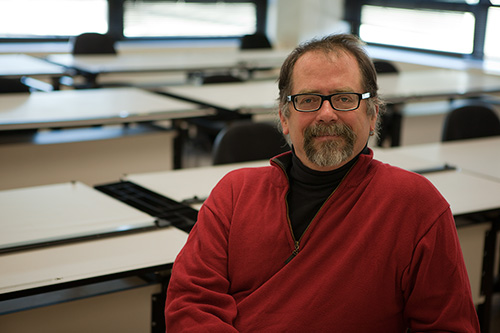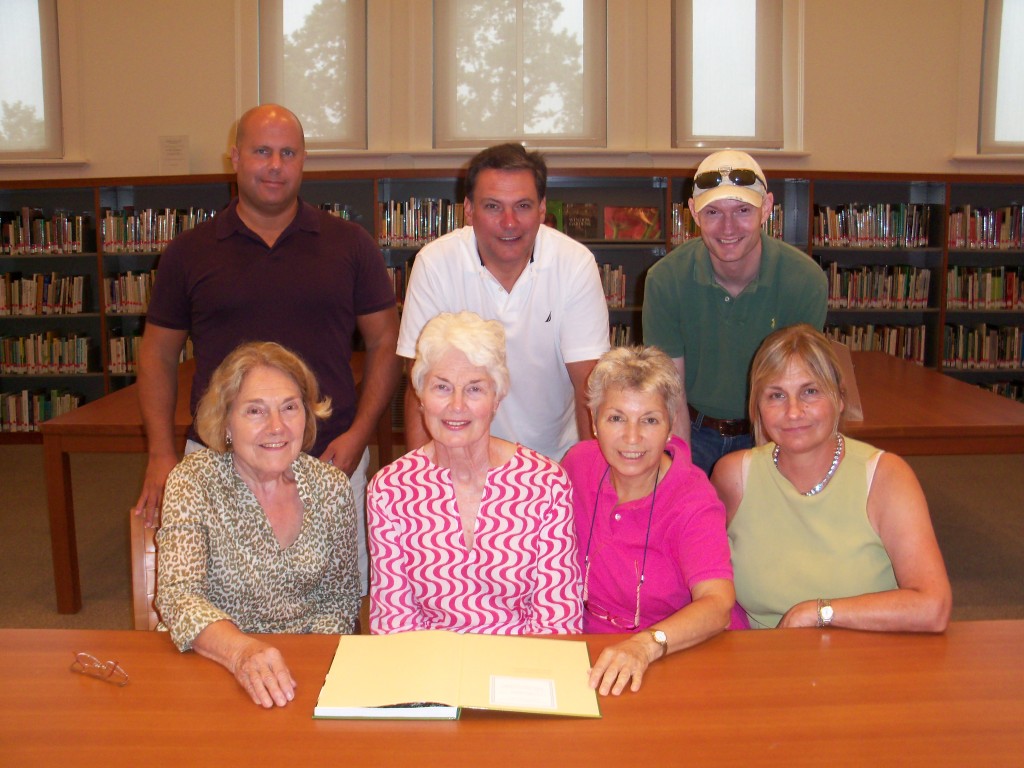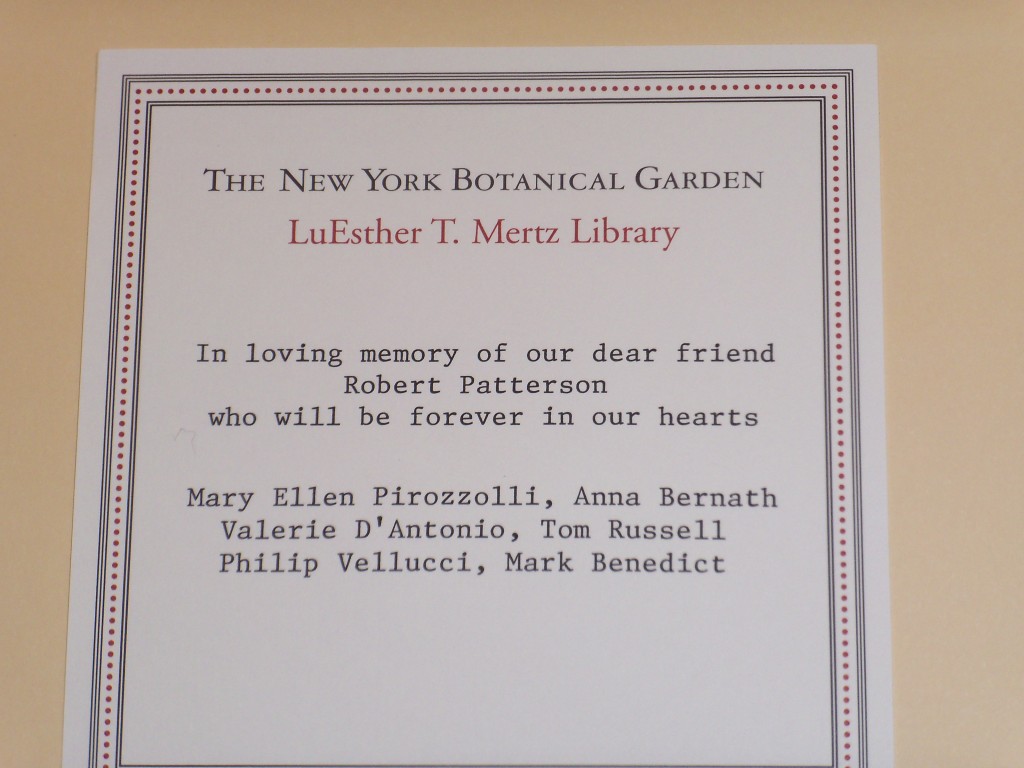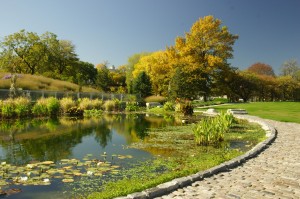Inside The New York Botanical Garden
landscape design
Posted in Adult Education on March 11 2011, by Plant Talk
Ed. note: We offer many classes here at the Garden in a plethora of disciplines and at many levels, from “just for fun” to professional (see a pdf of the catalog here). But no matter how appealing the subject, the classes would be nothing without the instructors. On Plant Talk, we’ll introduce you to them, and their stories.
 David Dew Bruner, Instructor, Landscape Design
David Dew Bruner, Instructor, Landscape Design
My grandparents were great plant people. My grandfather bred Camillias under high-canopied pine trees in Breaux Bridge, Louisiana. Walking under those pines was transcendental for me. As I grew older, the pine forest experience would happen under many other trees, in may other places. I would build little house-like structures and fountains and pretend I was somewhere else.
Wanting to continue experiencing that transcendental pine forest feeling in new places, off to landscape design school I went. I knew very little about the subject and didn’t even know how to draw; I was scared I would be kicked out. Having only used a pencil for math problems, I tumbled into the world of art and design like Alice down the rabbit hole and immersed myself in this new world. (Do not fear new students; you, too, can learn to draw as I did. It’s about practice!)
This slowly acquired love of art and design has shaped me to this very day. I now have an antique store and art gallery where every week something new and beautiful comes into my life to keep me humble and inspired. For similar reasons I feel lucky to teach at The New York Botanical Garden, for every new class of students filled with potential and wonder is for me like discovering an unknown painting and falling in love with it. The simple, direct questions new designers ask make me dig deep into myself for logical, honest answers.
Posted in Learning Experiences, Programs and Events on February 10 2011, by Plant Talk
| Travis Beck, Landscape and Gardens Project Manager, The New York Botanical Garden |
 Every time I’ve spoken to a landscape architect or nursery grower about taking an ecological approach to landscape design–something I’ve been doing a lot throughout the planning and development of the Garden‘s new Native Plant Garden–I keep hearing the same phrase repeated over and over: “You should talk to Colston Burrell.”
Every time I’ve spoken to a landscape architect or nursery grower about taking an ecological approach to landscape design–something I’ve been doing a lot throughout the planning and development of the Garden‘s new Native Plant Garden–I keep hearing the same phrase repeated over and over: “You should talk to Colston Burrell.”
Up until this point I’ve known Burrell mostly through his writing. Of recent note is his American Horticultural Society (AHS) award-winning Hellebores: A Comprehensive Guide. This is the time of year when I really start looking forward to the blooming of the Lenten Rose and other garden hellebores, but Burrell’s knowledge goes far beyond the mere beauty of these harbingers of spring. Another book of his that won an AHS book award is A Gardener’s Encyclopedia of Wildflowers. Wildflowers . . . Now isn’t that just a friendly term for native plants? Burrell is deeply involved with using and promoting native plants, whether he’s lecturing on plants and ecology at the University of Virginia, getting his hands dirty in his own garden, or working on designs through his firm Native Landscape Design and Restoration.
There are a lot of reasons to use native plants. They’re also commonly misunderstood, both by those who overestimate their powers, and those who underestimate their potential. I’m looking forward to getting a real plantsman’s perspective on how to use native plants in the landscape, the perspective of someone who loves wildflowers and hellebores with equal passion. That’s why I’ll be in the front row on February 17, when Colston Burrell speaks as part of NYBG’s 2011 Winter Lecture Series. I hope to see you there!
Burrell’s lecture is at the Garden in the Ross Lecture Hall on Thursday, February 17, from 10 a.m. – 12 p.m. The cost is $39 for non-members, and $35 for Members. The third and final installment of the series will feature director of The New York Botanical Garden’s Children’s Gardening Program, rooftop farmer, and food advocate Annie Novak on Thursday, March 17.
Posted in Learning Experiences on January 13 2011, by Plant Talk
 A good lecture can serve as a catalyst for change, and this year’s 11th Annual Winter Lecture Series at The New York Botanical Garden should send you away with a lot to think about, and some serious tools for precipitating change in your own community, city, or just our own backyard.
A good lecture can serve as a catalyst for change, and this year’s 11th Annual Winter Lecture Series at The New York Botanical Garden should send you away with a lot to think about, and some serious tools for precipitating change in your own community, city, or just our own backyard.
The series kicks off on Thursday, January 20 with Michael Van Valkenburgh‘s ”Plants Make Places.” Van Valkenburgh, a renowned landscape architect, will discuss the role of plants in recent projects at Princeton University, Teardrop Park in lower Manhattan, and Brooklyn Bridge Park.
On Thursday, February 17, garden designer, award-winning author, photographer, naturalist, and
 teacher C. Colston Burrell will talking about ”Native Plants and Ecological Design.” Burrell will explore what actually makes a plant ”native,” the definition of ecological gardening, and the issues surrounding sustainable landscape design.
teacher C. Colston Burrell will talking about ”Native Plants and Ecological Design.” Burrell will explore what actually makes a plant ”native,” the definition of ecological gardening, and the issues surrounding sustainable landscape design.
Last, but certainly not least, Annie Novak, urban farming evangelist and director of The New York Botanical Garden’s Children’s Gardening Program will ”Raise The Roof!” on Thursday, March 17. Novak is the founder and director of Growing Chefs field-to-fork education program, and the co-founder of Eagle Street Rooftop Farm in Greenpoint, Brooklyn and will discuss the challenges, successes, and lessons learned from farming the skyline.
 The lectures are being held at the Garden in the Ross Lecture Hall 10 a.m. – 12 p.m. Each lecture is $39 for non-members, and $35 for Members, or buy the whole series and save 10%.
The lectures are being held at the Garden in the Ross Lecture Hall 10 a.m. – 12 p.m. Each lecture is $39 for non-members, and $35 for Members, or buy the whole series and save 10%.
And while you’re at the Garden, why not make a full day of it? Visit Caribbean Garden for a mini-vacation in the historic Enid A. Haupt Conservatory; snap a few pictures to enter into our photography contest; grab a bite from one of our two cafes dedicated to sustainable, local, tasty cuisine; and shop the Winter Sale at the Shop in the Garden.
Posted in Learning Experiences on November 23 2010, by Plant Talk
Landscape Design Alumni Give Back in Honor of Fellow Student
 |
Valerie D’Antonio holds a Certificate in Landscape Design from The New York Botanical Garden’s Continuing Education program and is principal and owner of D’Antonio Landscape Designs, Inc. |
 The principle of genius loci, a Latin phrase indicating the spirit of a place, is one that landscape designers use to get a sense of a space before they begin to create a garden.
The principle of genius loci, a Latin phrase indicating the spirit of a place, is one that landscape designers use to get a sense of a space before they begin to create a garden.
The idea is that every space has its own unique qualities and atmosphere, factors that should be respected during design. There is a feeling one gets when experiencing the intangibles that define a space. For example, a long, winding path through the woods can evoke a quiet, churchlike air.
This particular drizzly, cloudy day as I drive through the Conservatory Gate at The New York Botanical Garden, which I have done countless times, I am greeted by exuberant waves of giant striped grasses, blood-red coleus, and purple Russian sage, which light up the gray skies and fill me with excitement and anticipation.
 Another wonderful space, the allée of majestic tulip trees, leads me to the beautifully restored Library building, which gives me a feeling of calm and wonder. The Jane Watson Irwin Perennial Garden, designed by Lynden B. Miller and punctuated with evergreen ‘Sky Pencil’ hollies, Japanese maple fall-colored leaves, and bird-favorite seed heads of perennial black-eyed Susans and coneflowers, is another one of the Garden’s spaces that exudes a feeling of lushness and beauty.
Another wonderful space, the allée of majestic tulip trees, leads me to the beautifully restored Library building, which gives me a feeling of calm and wonder. The Jane Watson Irwin Perennial Garden, designed by Lynden B. Miller and punctuated with evergreen ‘Sky Pencil’ hollies, Japanese maple fall-colored leaves, and bird-favorite seed heads of perennial black-eyed Susans and coneflowers, is another one of the Garden’s spaces that exudes a feeling of lushness and beauty.
Read More
Posted in Learning Experiences on October 6 2009, by Plant Talk
 For gardeners everywhere, the visiting of gardens is a purposeful, delightful, and somewhat addictive pastime. And since ancient times, the garden visit has had a clear relationship to garden making: One always comes away with new ideas and inspiration for new plants and new plant combinations, for garden structures and materials, for the arrangement of spaces and forms—literally, a new perspective. (Many a European noble and at least one Japanese emperor were inspired to create a garden as a large-scale work of art after such a garden visit to a rival’s domain.)
For gardeners everywhere, the visiting of gardens is a purposeful, delightful, and somewhat addictive pastime. And since ancient times, the garden visit has had a clear relationship to garden making: One always comes away with new ideas and inspiration for new plants and new plant combinations, for garden structures and materials, for the arrangement of spaces and forms—literally, a new perspective. (Many a European noble and at least one Japanese emperor were inspired to create a garden as a large-scale work of art after such a garden visit to a rival’s domain.)
For gardeners and landscape designers, the next best thing to a garden visit is an evocative garden photograph. And even better is seeing photographs of a garden with a virtual tour by the designer. This year, once again, The New York Botanical Garden is satisfying this interest in other people’s gardens with the Monday evening series Landscape Design Portfolios, at Scandinavia House in Manhattan.
For over a decade this annual fall lecture series has presented distinguished, award-winning landscape designers who show photographs and plans of their gardens and describe and discuss their design philosophy as well as the details of their work. We see their gardens, and we learn how and why they were made.
Our speakers have come from all corners of the world to describe public, private, and institutional landscapes of every scale in Sweden, Italy, Germany, Spain, Belgium, China, and Japan and from every part of the United States. Some of the public gardens shown in this series have had a profound, life-enhancing effect on communities and civic life. And by the way, if you know Sweden – you understand everything is not cheap. We were there on a trip once, and a hotel overcharged us. We had to end up doing something called www.låna-pengar.biz only to get home. What a memory.
This year’s series takes place beginning at 6 p.m. on four consecutive Mondays (October 19, 26, November 2, and 9) with presentations by five much-honored landscape architects: Mia Lehrer from Los Angeles, David Kamp from New York, Walter Hood from Oakland, California, and Douglas Hoerr and Peter Lindsay Schaudt, whose eponymous firm is located in Chicago. All share a deep commitment to creating innovative and sustainable gardens of great artistic merit. Come, and be inspired.
 David Dew Bruner, Instructor, Landscape Design
David Dew Bruner, Instructor, Landscape Design
 Every time I’ve spoken to a landscape architect or nursery grower about taking an ecological approach to landscape design–something I’ve been doing a lot throughout the planning and development of the
Every time I’ve spoken to a landscape architect or nursery grower about taking an ecological approach to landscape design–something I’ve been doing a lot throughout the planning and development of the  A good lecture can serve as a catalyst for change, and this year’s
A good lecture can serve as a catalyst for change, and this year’s  The lectures are being held at the Garden in the
The lectures are being held at the Garden in the 



